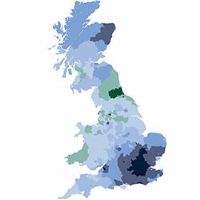For the UK property market, the short-term effects of the Global Financial Crisis (GFC) were dramatic and swift. The average UK house price fell by 20% in 16 months. Transaction levels, which had averaged 1.65 million a year in the previous 10 years, fell to 730,000 in the 12 months to the end of June 2009.
Ten years on, the crisis and its consequences have dramatically changed the property landscape. It was not until May 2014, for example, that the average UK house price recovered to its pre-credit crunch level, while transactions have only once risen above 1.3 million.
And, as we explore here, those events continue to have four significant impacts on the market and will shape it for many years to come.
.jpg)
.png)
.jpg)
.jpg)
.jpg)

.png)
.png)